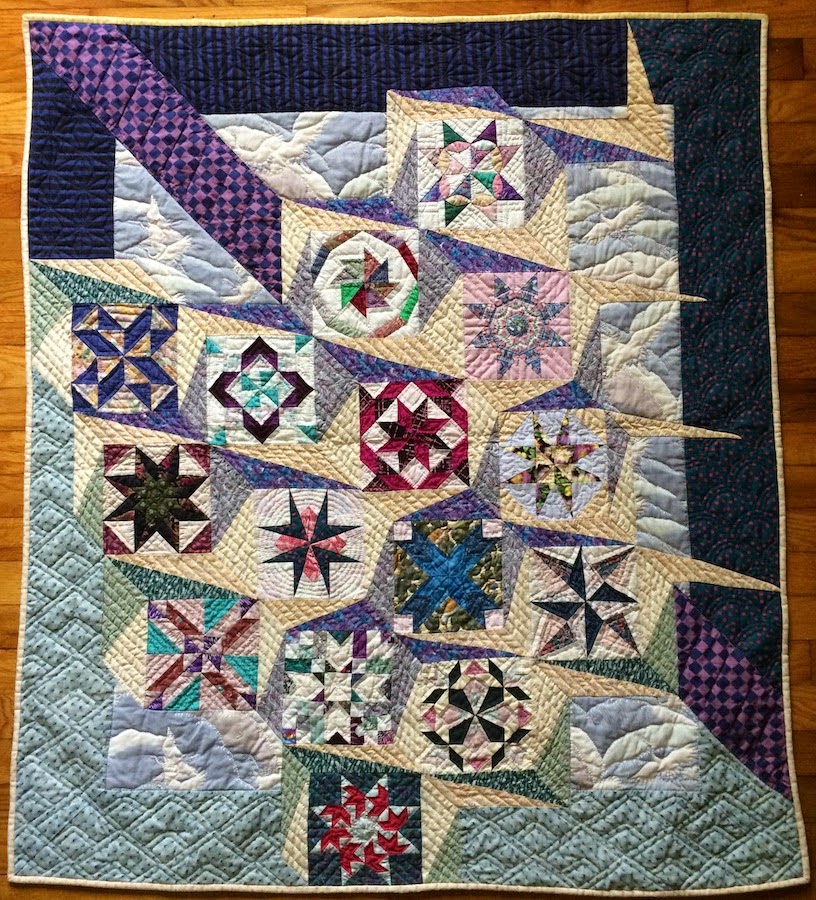NOTE about colors: The true colors of these pieces are somewhere between the light and dark in these photos.
These two 12" squares started out as the answer to the challenge of interpreting a photo of an old wheel.
Here's the photo of the old wheel. The photo was taken by a member of the Creative Camera Club of Lexington. Unfortunately, I do not know the name of the photographer. Their photo is being used in conjunction with the Quilt Artists of Kentucky on the Quiltography Project 2015-2016. Those of us who have chosen to participate must agree to interpret a published photo in whatever style we see fit, as long as the piece is 12" square.
I started with two squares of fabric, one from a light colored commercial batik and one a dark color. In this case beige and blue. I free hand cut the squares into curved pieces, then switched out the pieces to create two blocks. I pieced the blocks and then quilted them. I free motion quilted, using my home Bernina Machine, with Madiera FS20 Bronze metallic thread.
After quilting each square, I cut circles out of them and placed them into the alternating piece. I used a wide zizag stitch to anchor the circles into the holes.
Once I had the circles anchored into the holes I started adding embellishments. Fuzzy yarn outlines each shape in the piece with the light background. Shiny ribbon outlines the shapes in the piece with the blue background.
I found some lamp glass beads, glass leaves and glass chips to use on the pieces. Even after I started adding in the beading, everything looked a bit dull still, so, I decided to see what would happen if I colored in each of the circles with water color pencils. You can see where I started with the circle in the lower right hand corner.
In these photos you can see how I shaded in each circle and then painted a white highlight on each circle. I also painted the grass.
After coloring in each area, I went over everything with Golden GAC 900 fabric medium. The colors blended beautifully and were deepened in shade.
Last of all, I added in some painted highlights to the blue pieces.
The square with the light background is my official entry into the Quiltography Challenge. All of the work will be on display next November in downtown Lexington, along with the original photos.
These two pieces were so much fun that I decided to see what would happen if I created two more squares, painted them, fractured and then put them back together.
I ended up with FRACTURED WATERCOLOR GARDEN.
More about that in another upcoming post.
CREATING ALWAYS with JOY,
Karen















































